How much does translation cost? Budgeting for document translation
Each year, and for many each quarter, marketing departments, training departments, legal and documentation departments need to address their translation budgets. Planning for translation costs is key in building your budgets to ensure your required communications are paid for and published across languages and locales when needed.
In this 5-part blog series, I am going to help you budget for translation projects whether for an individual project or a month, quarter, or year of content. We will break down your budget across 5 project types:
- Document Translation
- Website Localization
- Software Localization
- Audio/Video Localization
- Global Digital Marketing
Estimating Translation Costs for Documents
To estimate your translation spend or your budget, we will use a very easy and handy tool, GPI’s Budget Calculator also known as GPI’s Translation Quick Quote Calculator. GPI’s Translation Quick Quote Calculator (QQC) allows budget builders to provide basic metrics and receive a budgetary quote which includes tasks, timelines, and costs per language selected. There are even handy popups to guide you through the steps to get your translation quotes.
Now if you prefer, you can send GPI any number of translation projects (source documents or just the word count, page count, languages and subject matter). We can then provide an exact quote and budget based on your submissions. Many budget builders appreciate the online budget tool especially if they don’t have any source documents, but have a rough idea of projects, word count, languages, etc.
Using the Translation Budget Calculator
1. To begin, just click on the link (https://www.globalizationpartners.com/translation-quote-calculator/) and select your project type.
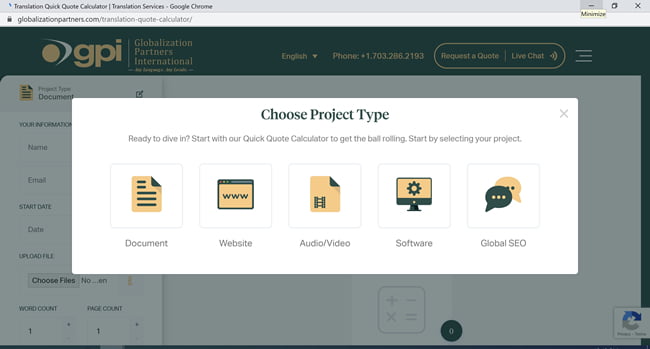
2. Answer a few important questions needed to estimate a document translation project.
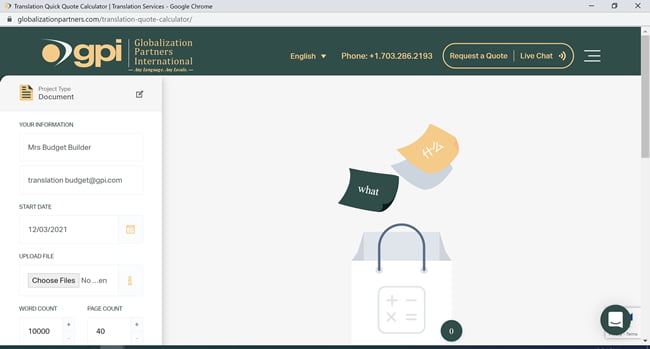
Questions include:
a) Name, email, word count, and start date.
b) If you have actual files, you can upload the document and a word count will be calculated automatically.
c) If you do not have a document, input metrics like word count, images requiring localization and languages to get started.
d) Do you need “formal glossary development”? This is creating a glossary of all important keywords related to the project such as technical terms or brand names, etc.
e) Do you need “desktop publishing” – This is formatting the translated documents to match the source in terms of design, fonts, graphics, etc.
f) Do you need “Copywriting” This is authoring original content in another language and can sometimes be referred to as “transcreation” which is translation + copywriting and is common for marketing or ad copy.
HINT: The Translation Budget Calculator has a pop-up navigator to help you fill in all the fields. 😊
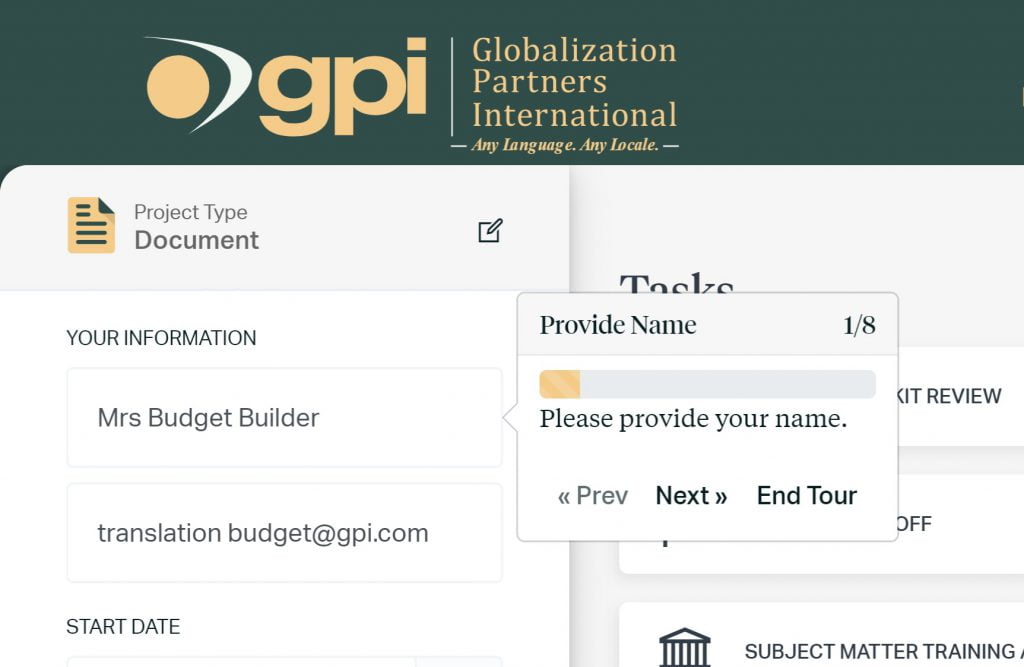
3. After you finish answering the questions, hit “Calculate” and a translation quote will be generated! The translation quote will include other useful information such as the exact tasks and steps performed in translating a document, approximate timelines, as well as the costs per language requested.
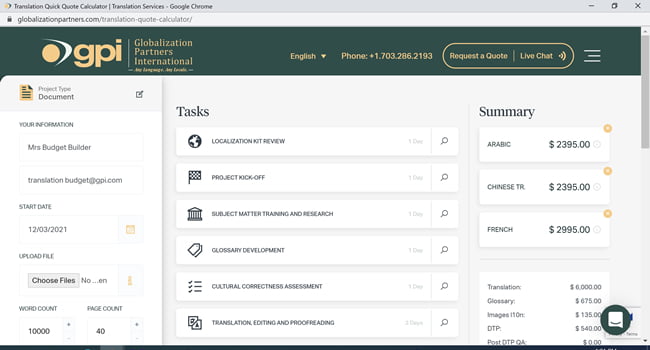
4. Presto… you have your budget! 😊 If you need to run into a budget meeting, just print or email yourself a copy of the quote with the push of a button.
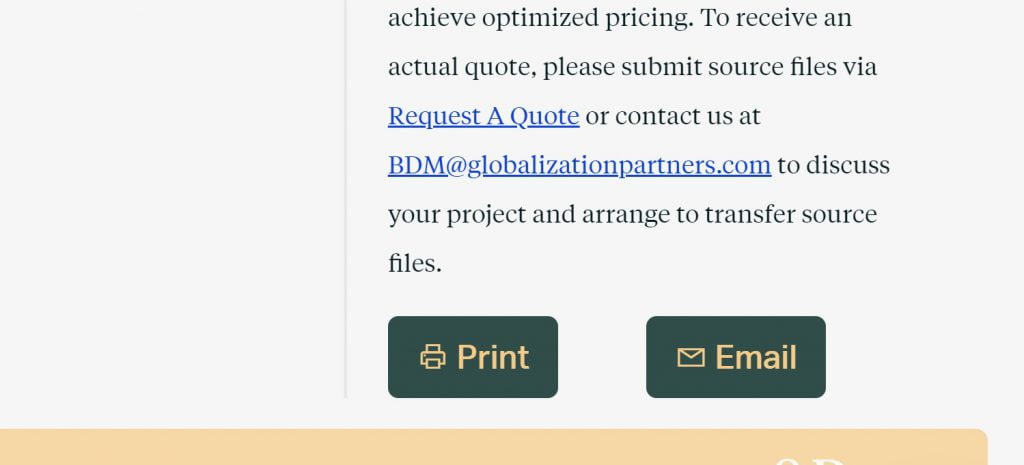
HINT: It is easy to combine documents within one quote generation form if all your languages are the same. Or you can do a series of individual document quotes, print or email them and combine at the end. We find most people like to cost out individual documents or sets of documents as they may decide to not translate or to translate something based on the cost and can then easily remove or add it from the total budget planned.
Hope you found this blog helpful! I look forward to sharing my next blog on “Estimating Translation Costs for Websites”.

